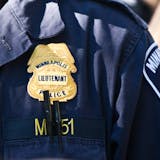It was a dark and stormy night. Make that very dark and very stormy. Bursts of lightning exploded in the sky. Thunder shook the very ground where our covered wagon stood.
Yes, a covered wagon.
Well, the weather was not what I expected when I signed up online for sleeping quarters at the Ingalls Homestead in De Smet, S.D. Nor when I stopped by its visitors center, a few minutes before the doors would be locked for the night.
"Looks like a storm is coming," said the clerk as she handed over the key to the wagon. "There are bathrooms in the storm shelter and here at the center."
And then she was gone, having dispensed the necessary information. The five of us — three granddaughters, ages 3, 7 and 10, my daughter and I — were alone on 150-plus acres of farmland, not far from the shores of Silver Lake, made famous by the children's books of Laura Ingalls Wilder. Little did we know what awaited during our night on the prairie.
After settling in at the covered wagon — sleeping bags stretched out on the lofted back and along two wooden benches on the sides — we headed across the field to the homestead buildings far in the distance, with us looking much like a scene from the TV version of "Little House on the Prairie," the young'uns running through the grass, Ma and Grandma trailing behind. To our delight, we discovered we were not alone, as chickens, kittens and a young calf squawked, meowed and mooed in the outbuildings, cause for excitement for these New York City kids who had never been to a farm.
As the sun set, we headed back to the wagon, given we would have no light but that from a cellphone once darkness fell.
Shortly after midnight, the light show outside, illuminated through the wagon cover, woke me. In the distance, I could hear sporadic rumbles.



